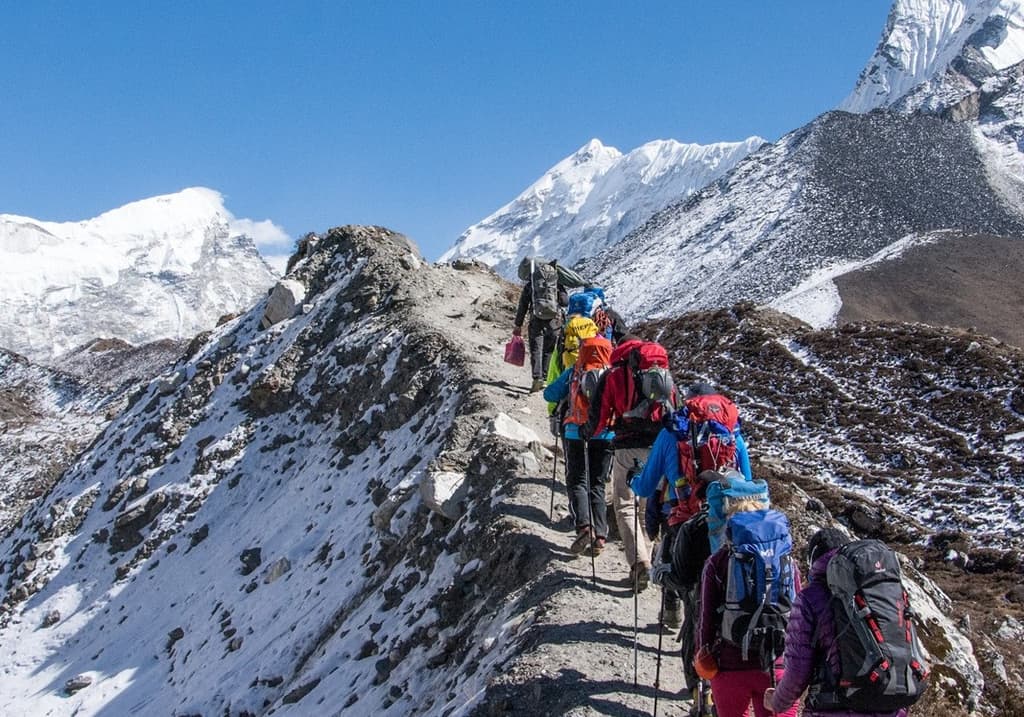National Parks in Nepal
Nepal, a country adorned with diverse landscapes and varying altitudes, boasts an incredible array of flora and fauna. From the towering peaks of the Himalayas to the vast Terai plains, the country is home to a multitude of species, some of which are rare, endangered, and even mythical. It's a nation where one can witness the vibrant colors of the Lophophorus, track the majestic Royal Bengal Tiger, marvel at the unique one-horned Rhino, and even embark on quests to spot the elusive snow leopard.
The National Parks of Nepal play a crucial role not just in the conservation of these incredible species, but also in preserving the pristine nature encompassing them. These parks, which span altitudes from a mere 70m to the towering height of 8,848m, ensure that every facet of Nepal's diverse ecosystem is protected and nurtured. Furthermore, several of these parks have been recognized and honored as UNESCO World Heritage Sites, reflecting their global significance. Presently, with 12 National Parks dotted across its expanse, Nepal stands as a beacon of conservation, effectively balancing the protection of its natural treasures with the needs of its people.
Chitwan National Park
Established in 1973, Chitwan National Park holds the esteemed title of being Nepal's first national park. Its significance on a global scale was recognized in 1984 when it was inscribed as a UNESCO World Heritage site. Stretching across an expansive 952.63 square kilometers, Chitwan is nestled in the inner Terai region, in the southern belt of Nepal, with altitudes ranging from a mere 100m to a peak of 815m.
This biodiversity hotspot is a sanctuary to an impressive array of wildlife. It houses a total of 68 species of mammals, 544 varied species of birds, 126 diverse species of fish, and a remarkable 56 species of herpeto-fauna. The park is especially renowned for its conservation efforts towards the endangered one-horned rhinoceros and the elusive Royal Bengal Tiger. Furthermore, the park is a refuge for the Gharial, a rare crocodilian species, and hosts domesticated elephants, known locally as house elephants.
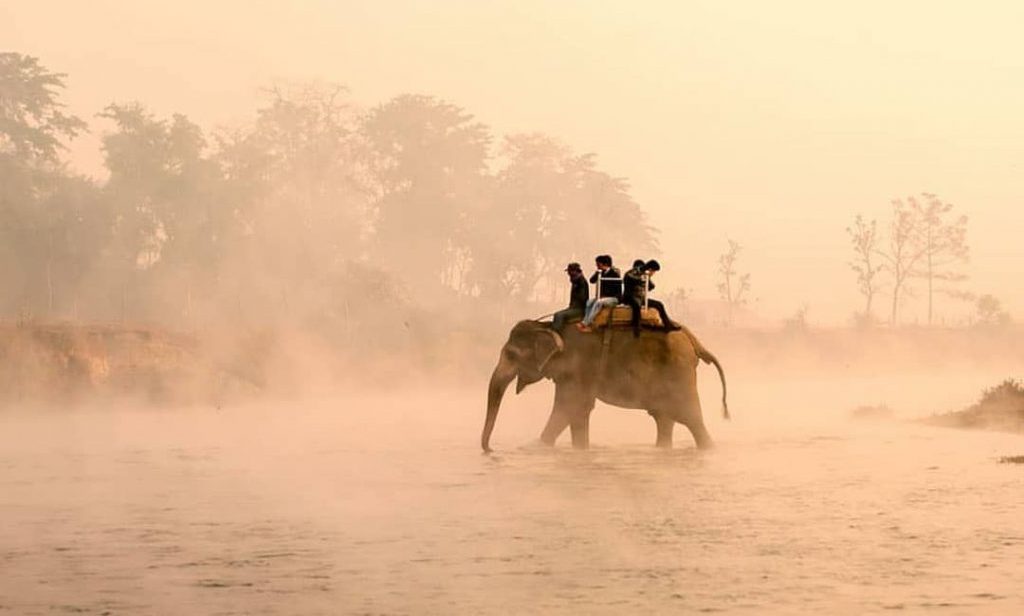
The vibrant ecosystem of Chitwan is exemplified by the teeming birdlife found along the banks of the Rapti and Narayani rivers, where on any given day, one might spot hundreds of unique bird species. Adding to the park's ecological richness is the presence of the world's tallest grass species. Other wildlife residents include the Bison, Wild Bear, various species of vultures, and an array of other fauna and flora, cementing Chitwan's reputation as a must-visit for nature enthusiasts.
- Distance from Kathmandu: 140km
- Best time to visit: Oct-Dec and June-Sept
- Entry fee: Rs 1500+13%VAT for foreigners
Bardiya National Park
Inaugurated in 1988, Bardiya National Park sprawls over an impressive 968 sq. km, making it one of the most expansive and pristine national parks in Nepal. Located in the southern terrain of the Bardiya district, the park boasts an altitude variation from 152m to a high of 1,441m. Remarkably, Bardiya seamlessly extends its buffer zone in coordination with Banke National Park, preserving a vast undisturbed expanse of nature.
A lush 70% of Bardiya is swathed in dense forest, comprising a harmonious blend of grassland, savannah, and riverine terrains. This verdant landscape nurtures an astonishing 839 species of flora, including diverse vascular plants, dicots, monocots, and ferns. Within its leafy confines, the park is teeming with life, hosting 642 faunal species. Notably, the park shelters 53 species of mammals, 125 fish species, 23 varieties of reptiles and amphibians, and an astounding 407 bird species.
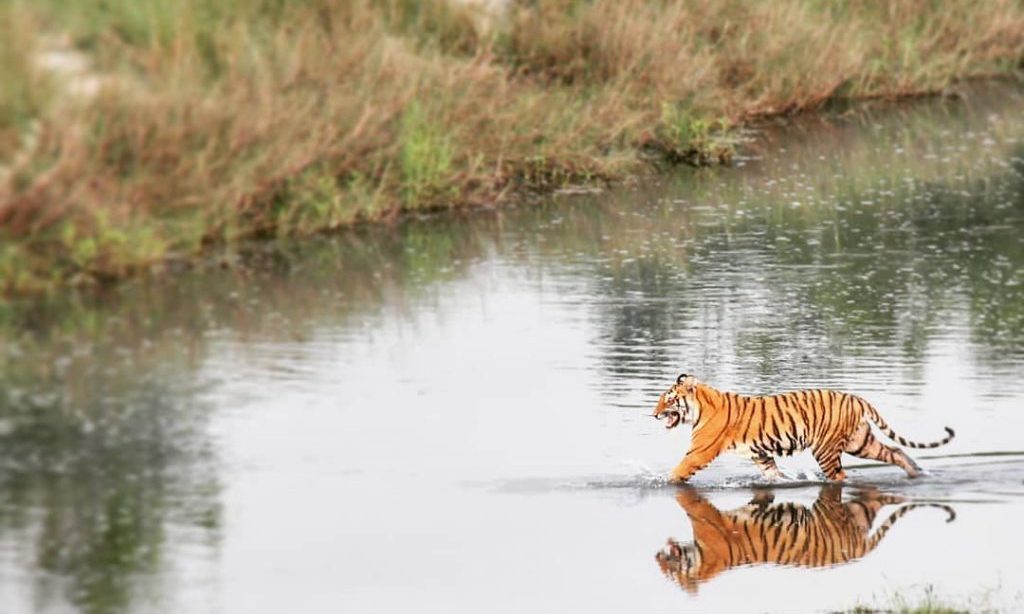
Bardiya's wildlife roster includes majestic creatures like the one-horned rhinoceros, Asiatic Elephant, Royal Bengal Tiger, Leopard, Swamp Deer, and the playful Grey Monkey. Its river systems, namely Babai, Bheri, and Karnali, swirl with a myriad of 125 fish species. For those seeking an immersive nature experience, Bardiya offers activities such as Jungle Safari, Elephant rides, Nature walks, Jungle treks, Rafting, and Fishing. Moreover, the region is steeped in Tharu culture and traditions, offering travelers a vibrant cultural immersion. A visit to the local Tharu community is highly recommended for anyone venturing into Bardiya.
- Distance from Kathmandu: 376km
- Best Time to visit: Sept-Dec and Feb-March
- Entry fee: Rs 1000+13%VAT for foreigners
Rara National Park
Incepted in 1976, Rara National Park holds the distinction of being Nepal's smallest national park, encapsulating a modest yet biodiverse 106 sq.km. Nestled between the elevations of 2,800m and 4,039m, the park is predominantly located in the scenic terrains of the Humla-Jumla regions. Its inception primarily aimed to safeguard the unique flora and fauna that flourish in this part of Nepal.
Rara National Park's crowning glory is undoubtedly the expansive Rara Lake, Nepal's largest freshwater alpine lake, spreading over an impressive 10.8 sq.km. This pristine lake mirrors the azure skies, surrounded by majestic hills and lush forests. The park is a haven for botany enthusiasts, housing over 1,020 species of flora. The verdant woods are dominated by blue pine, rhododendron, black juniper, oak, and the ethereal Himalayan cypress. As for its fauna, the park is home to 51 mammalian species, including the elusive musk deer, regal Himalayan Tahr, cunning jackal, and the stealthy leopard. Avian lovers would be delighted with its avifauna, which boasts 241 bird species.
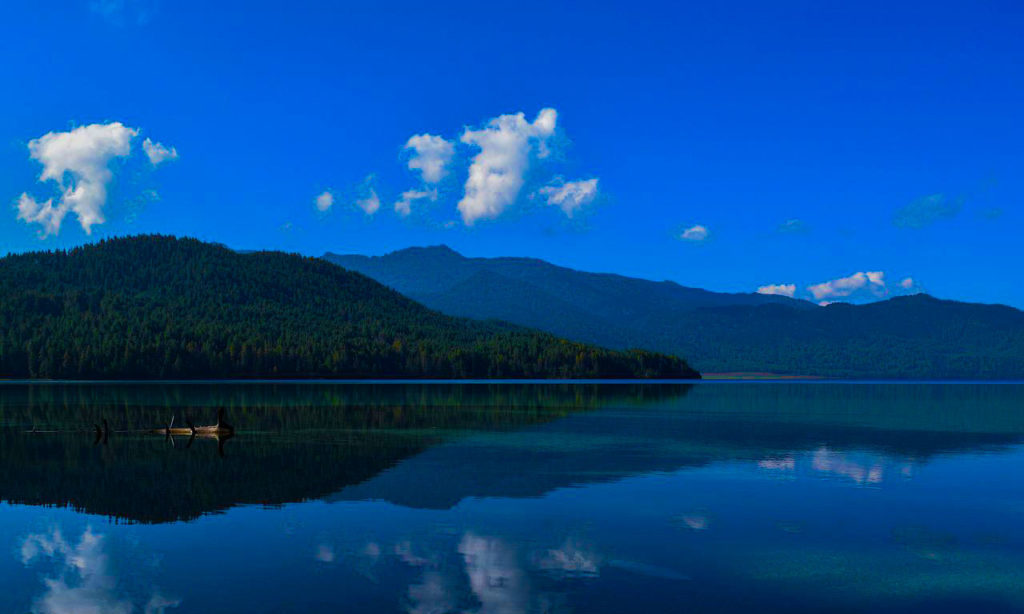
Uniquely, Rara Lake remains unfrozen throughout most times, inviting visitors to indulge in swimming and boating in its serene waters. Additionally, the park offers short treks and a plethora of adventurous activities for those keen to explore its untouched wilderness.
- Distance from Kathmandu:375km
- Best time to visit: April to May and Sept to Nov
- Entry fee: Rs 3000+13%VAT for foreigners
Shey-Phoksundo National Park
Shey-Phoksundo National Park is the largest national park in Nepal with an area of 3,555sq.km. This national park was established in 1984 in the district of Dolpa and Mugu. The altitude range starts from 2,130m to 6,885m. The Phoksundo Lake is a prominent feature of this national park. This national park is the only trans-Himalayan national park in Nepal.

The Phokdunso lake is surrounded by glaciers and this lake is famous for its magnificent turquoise color. The outlet of this lake makes Nepal’s highest waterfall. This park has 286 species of different plants, 200 species of birds, and 29 species of butterflies. Endangered animals like snow leopards, grey wolves, blue sheep, and musk deer are the major attractions of this national park. Caterpillar Fungus ( Yarsagumba) is abundantly found in this area and is one of the most expensive fungi in the world. Including lakes and wildlife, this region is famous for Tibetan Buddhism, culture, and history as well. Kanjiruwa Himal is another attraction of Shey-Phoksundo National Park. Trekking, mountain flights, pilgrim tour, and extreme Upper Dolpa Trekking can be done in this national park. Except for this, the Yarsagumba collection and animal and bird watching can be done with the help of a forest guide.
- Distance from Kathmandu:315km
- Best season to travel: April to Nov
- Entry fee: Rs 3,000+13%VAT for foreigners
Sagarmatha National Park
Sagarmatha National Park, established in 1976 and listed as a UNESCO World Heritage Site in 1979, is one of Nepal's most renowned national parks. Spanning an area of 1,148 square kilometers, the park is dominated by the majestic Mount Everest, the highest mountain in the world, standing at 8,848.86 meters. The park's altitude ranges from 2,845 meters to the peak of Everest.
Home to a variety of endangered species, including the elusive snow leopard, musk deer, Himalayan tahr, and red panda, Sagarmatha National Park is a haven for wildlife. The park boasts beautiful vegetation, including rhododendron, juniper, pine, and fir forests. The national bird of Nepal, the stunning Lophophorous (Danphe), can also be found within the park.
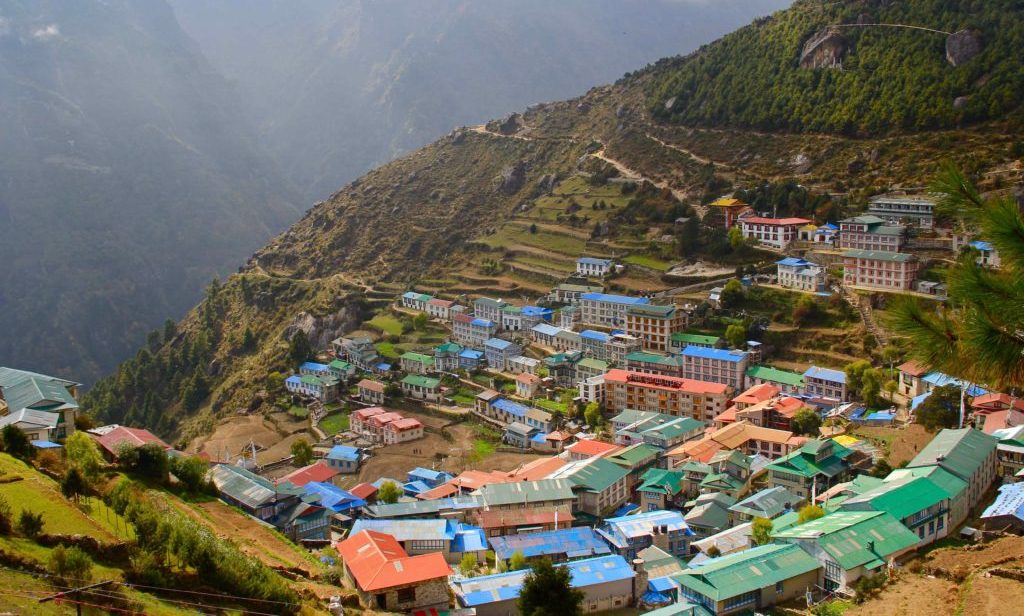
The national park is a popular destination for trekkers and climbers, with Everest Trekking being the most famous activity. Recently, skydiving has gained popularity, offering an exhilarating experience of freefalling from approximately 28,000 feet. The Sherpa people, followers of Tibetan Buddhism, are the predominant inhabitants of the region and add to the cultural richness of Sagarmatha National Park.
- Distance from Kathmandu: 141km
- Best seasons to travel: Mar-May and Sept-Now
- Entry fee: Rs 3,000 for foreigners
Khaptad National Park
Another amazing national park that is high in both natural and spiritual ways. The Khaptad National Park was established in 1984 with an area of 225sq.km. The altitude range starts from 1,400m to 3,300m, which lies in the far west of the Bajura and Bahjang districts. The renewed Khaptad Baba Ashram is a religious site where Hindu pilgrims come to worship Shiva on the full moon day of July and August. Khaptad Baba moved to this part in the 1940s to meditate and become a renowned spiritual saint.
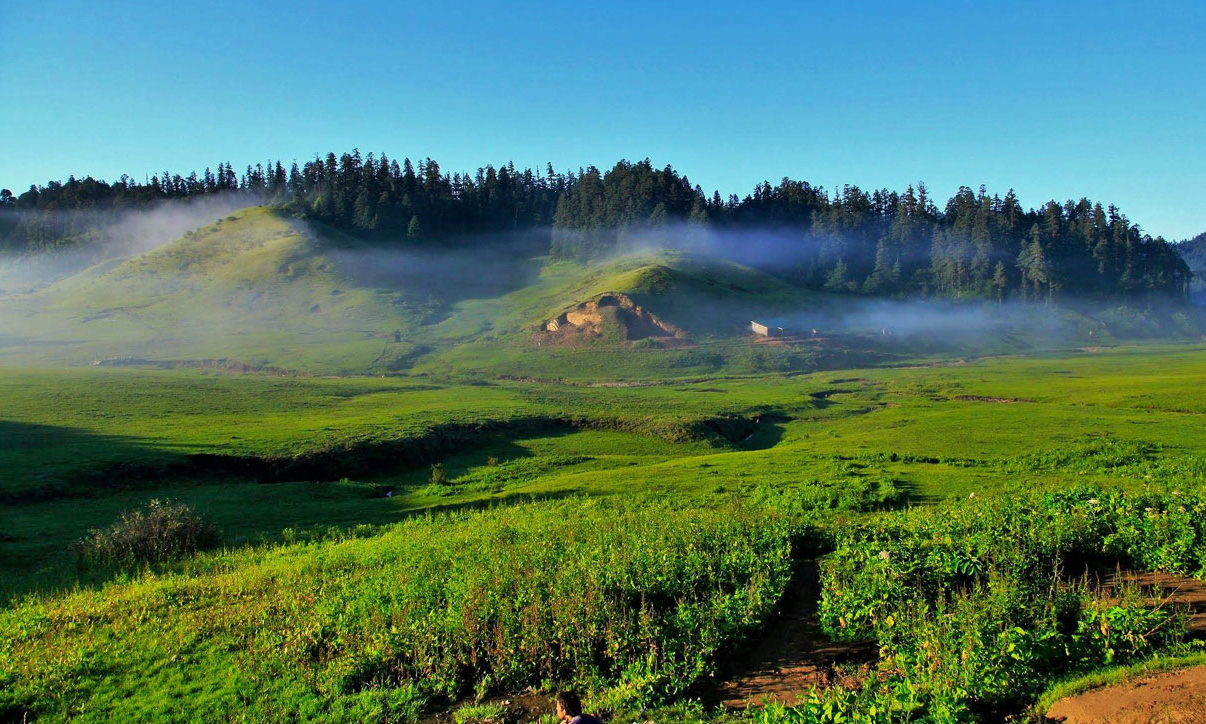
This park has played a great role in the protection of 567 species of flora Chir-pine rhododendron, Himalayan oak, and riverine forest. This part protects 23 species of mammals, 287 species of birds, 23 species of amphibians, and reptiles, which includes leopards, black bears, wild dogs, musk deer, and pleasant. Khaptad Trek, Jungle treks, bird watching, and jungle safari are the major activities including meditation in Khaptad Baba Ashram. A cultural tour can be done to explore the local culture and lifestyles.
- Distance from Kathmandu: 450km
- Best season to travel: March to May and Oct-December
- Entry fee: Rs 3,000+13%VAT
Makalu Barun National Park
The amazing National park in Nepal at the foothills of the Makalu range is the only protected park in the world with an elevation gain of more than 8,000m enclosing tropical forests as well as mountains. The park was established in 1992 in the eastern part of Sagarmatha National Park. The park is spread over an area of 1500sq.km in the Solukhumbu and Sankhuwasabha districts. This park covers several mountains including the fifth tallest mountain in the world, Makalu 8,463m.
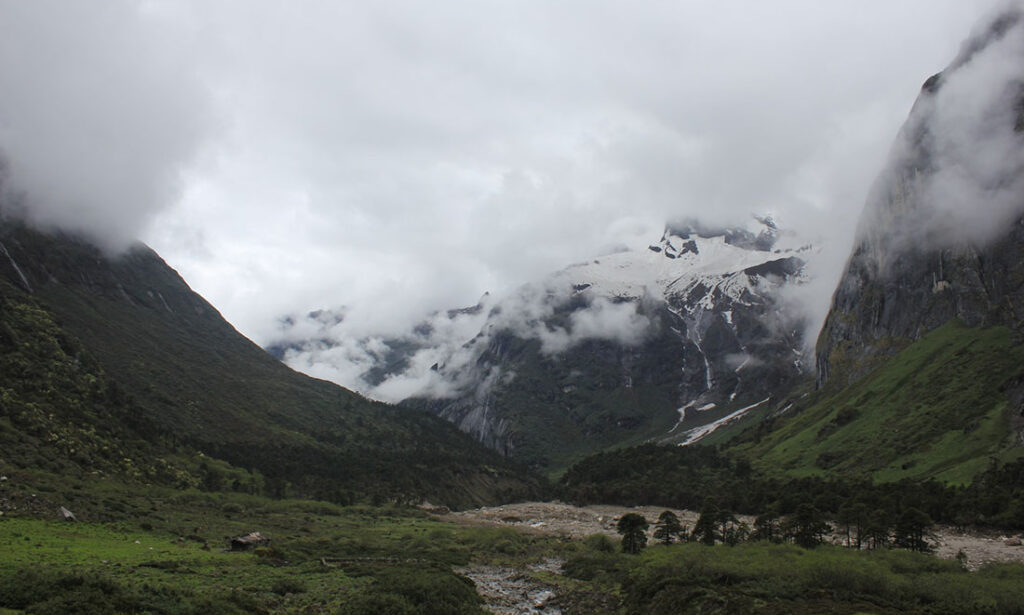
Makalu Barun NP protects 88 species of mammals, 315 species of butterflies, 43 species of reptiles, 16 species of amphibians, 440 species of birds, and 78 species of fish. Clouded leopards, snow leopards, red pandas, Himalayan wolves, black bears, and golden jackals are the most famous fauna of this park. The amazing birds like eagles, raptors, sunbirds, and other brilliant-colored birds make this national park more delightful. The flora includes rhododendrons, junipers, orchids, and oaks are examples of the rich biodiversity of this national park. You can do trekking, hiking, animal watching, peak climbing, and nature walking in this park. Since this park is rich in biodiversity among all the national parks.
- Distance from Kathmandu: 500km
- Best season to travel: March to May and Oct to Dec
- Entry fee: Rs 3,000+13%VAT
Langtang National Park
Langtang National Park is the closest national park to Kathmandu, which was established in 1976 as the 1st Himalayan national park. The park is spread over an area of 1,710sq.km in the Rasuwa, Nuwakot, and Sinshuplanchock districts. The most popular holy river Gosaikunda which is located at an altitude of 4,300m also lies in this national park. This park played an important role in the conservation of biodiversity with the help of local people.
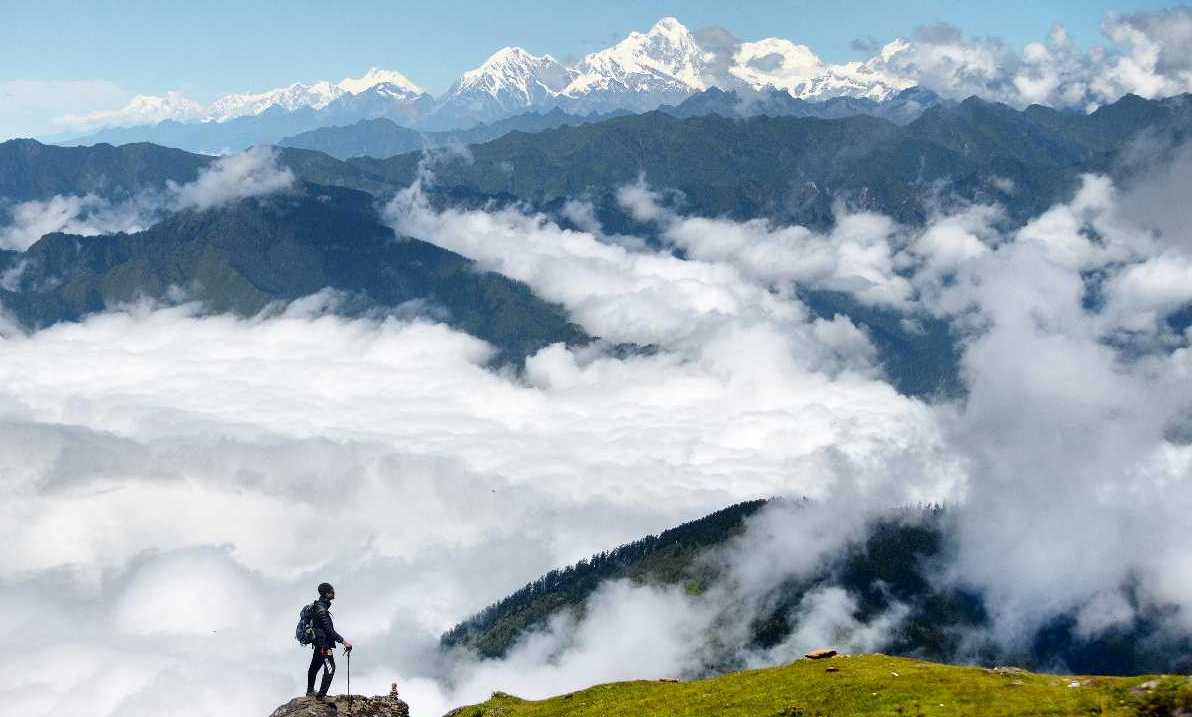
This park exhibits a high diversity of 14 vegetation types in 18 ecosystems which makes the wonderful diversity of flora and fauna. Chirpine, rhododendron, silver fir, and oak are the beautiful flora of this national park. Langtang is famous for its bird population where 250 species of birds are abundantly available inside this national park. A red panda, Black bears, snow leopard, and 46 species of mammals are protected in the Langtang region.
Trekking routes like Langtang, Helambu, and Gosaikunda are the more famous activities of this national park. Besides this, nature walks, bird watching, peak climbing, and cultural tours are amazing activities that can be done in this national park.
- Distance from Kathmandu: 50km
- Best time to travel: Sept-Now and April-June
- Entry fee: Rs 3,000+13%VAT
Shivapuri Nagarjun National Park
The nearest park which even covers the whole Kathmandu valley from most of its sides was established in 2002. This park covers an area of 159 sq.km. This park is spread over four different districts including Kathmandu, Nuwakot, Dhading, and Sindhupalchowk. The park is full of beautiful flora, amazing fauna, sacred places, and sites that are the major attractions of Shivapuri National Park.
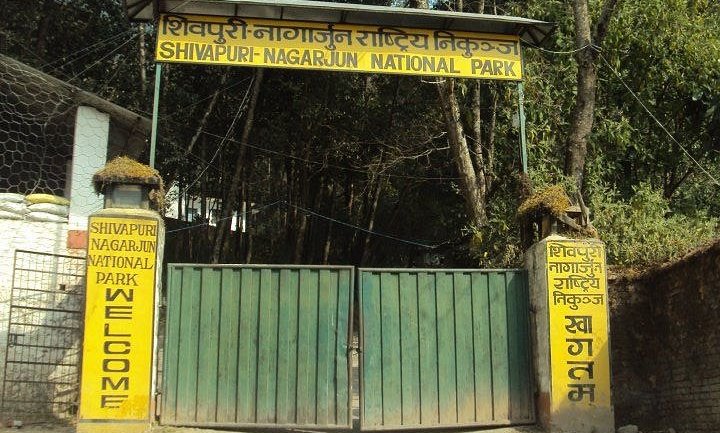
The flora includes pine, oak, rhododendron, and firs to make this park more beautiful. The park played an amazing role to protect the 318 species of birds including eagle owl, dove, golden-throated barbet, and white-garget flycatcher. Amphibians and reptiles also frequent this site, with the monocle cobra, the Himalayan keelback, the olive slender snake, and the yellow-bellied worm-eating snake. Four species of bats have also been found here. Faunas like the Indian leopard, jungle cat, civet, golden jackal, Himalayan black bear, Himalayan goral, barking deer, wild boar, Chinese pangolin, Indian crested porcupine, Himalayan pika and can be seen here. The Park is also home to 129 species of mushrooms as well. This park is most famous for short hiking like Nagigumba, Sundarijal, Panimuhan, and Kakani. Many people who stayed in Kathmandu prefer to do a day hike in Shivapuri national park. Night view seeing, jungle safari and jungle walking can be done during the favorable season.
- Distance from Kathmandu:11km
- Best season to travel: March to June and April is the best time to explore Shivapuri NP
- Entry fee: Rs 1,000+13%VAT
Banke National Park
Established in 2010, Banke National Park stands as the most recent addition to Nepal's illustrious collection of national parks, earning its title after being recognized as a "Gift to the Earth." Encompassing a sprawling 550 sq.km, this conservation haven is strategically situated in Nepal's midwestern region. The park's inception was particularly geared towards the conservation and protection of the majestic Bengal Tiger, given its contiguous nature with the renowned Bardiya National Park.
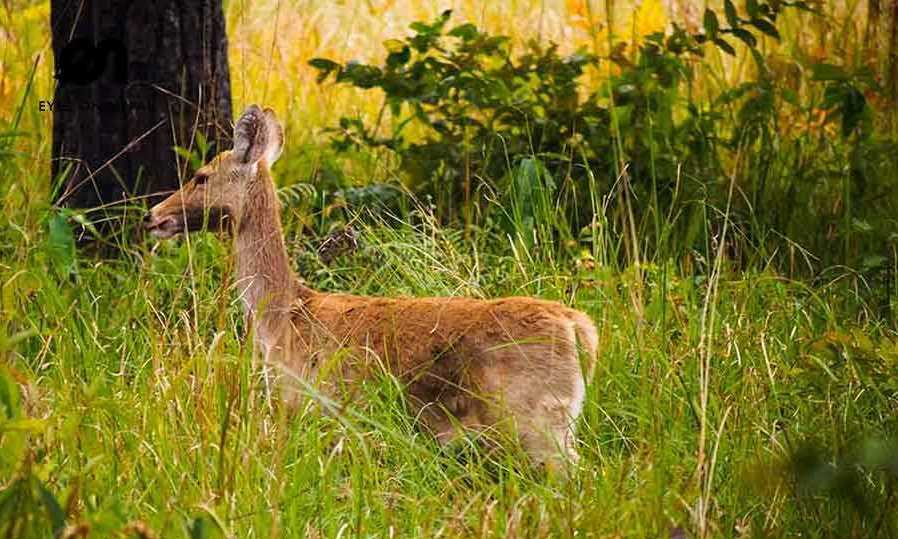
At the heart of Banke National Park lies a rich tapestry of eight distinct ecosystems, ranging from the verdant sal forests to the vibrant deciduous regions, expansive savannahs, and the ever-changing floodplains. Its diversity is further underscored by its role as a sanctuary for several fauna. Notably, it shelters the elusive Bengal Tiger, the enigmatic striped hyena, the resplendent giant hornbill, the elusive black stork, and the ruddy mongoose, which was documented for the inaugural time within a conservation enclave. With a holistic approach to preservation, the park boasts a diverse array of life, encompassing 8 mammalian species, a verdant spread of 124 plant species, a colorful palette of 300 bird species, and a unique collection of 7 amphibian species. Among these, the graceful Asiatic wild elephants stand as a prime attraction, promising enthralling sights for visitors.
For those with an adventurous spirit and an appreciation for nature, Banke National Park offers a plethora of experiences, including jungle safaris, immersive forest walks, enlightening nature walks, and captivating bird-watching excursions.
- Distance from Kathmandu: 530km
- Best time to travel: Oct-April
- Entry fee: Rs 500+13% VAT
Parsa National Park
Parsa National Park, while boasting its title as the most expansive wildlife reserve in Nepal, has a history that traces back to 1984 when it was established. However, it wasn't until 2017 that it was officially declared a national park. Nestled within the inner-Terai region, this natural gem spans a staggering 627.39 sq.km. Its boundaries envelop the districts of Parsa, Makwanpur, and Bara, making it a significant conservation area.
Dive deeper into Parsa, and you'll discover a botanical treasure trove: the park shelters a grand total of 919 flora species. This includes a diverse range of vascular plants, dicots, monocots, and even rarities like pteridophytes and gymnosperm. But it's not just the flora that's impressive. Parsa is a wildlife enthusiast's dream come true. Visitors can witness majestic mammals like the Asian elephant, the fierce Royal Bengal tiger, the intriguing sloth bear, the elusive wild dog, and a plethora of deer species such as Sambar and hog deer. Other notable residents include the striped hyena, jungle cat, palm civet, blue bull, gaur, rat, and the often elusive leopard.
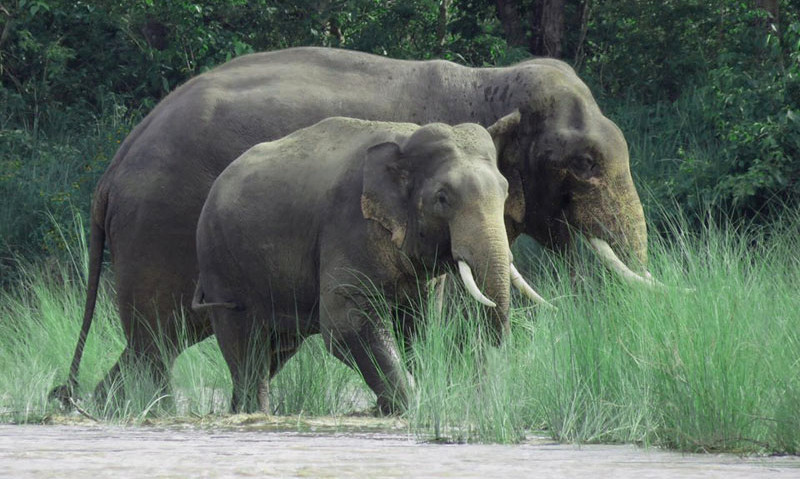
For avian lovers, Parsa is nothing short of a paradise. With a thriving bird population, the park is home to an astounding 527 bird species. Key highlights among these are the ethereal paradise flycatcher, the dramatic large racquet-tailed drongo, the resonant giant hornbill, the striking white-breasted kingfisher, the vibrant golden-backed woodpecker, the iconic red jungle fowl, and the regal peafowl. And for those with a keen interest in reptiles, Parsa's terrains host species like the common cobra, banded krait, rock python, and even the formidable king cobra.
Visitors to Parsa National Park can immerse themselves in an array of activities. From exhilarating jungle safaris and tranquil forest walks to enlightening nature strolls, there's something for everyone. Additionally, the park offers cultural tours, giving travelers a chance to intimately experience the rich heritage of the region.
- Distance from Kathmandu: 105km
- Best time to travel: Oct-Dec is the best season to encounter animals.
- Entry fee: Rs 1,000+13%VAT
Suklaphanta National Park
Shuklaphanta National Park is a notable national park located in the far-western region of Nepal. was established in 1976 and later it was listed as a National park in 2017. Covering an area of 305 square kilometers, the park is renowned for its pristine wilderness and rich biodiversity. It is named after the Shuklaphanta grassland, which forms a significant part of the park's landscape. Shuklaphanta National Park is famous for its population of endangered swamp deer (barasingha), which is one of the park's main attractions. The park protects 700 species of flora, 423 species of birds, 46 species of mammals, 28 species of fish, and 12 species of reptiles including the Bengal Tiger, Indian leopard, elephant, and mighty one-horned rhino.
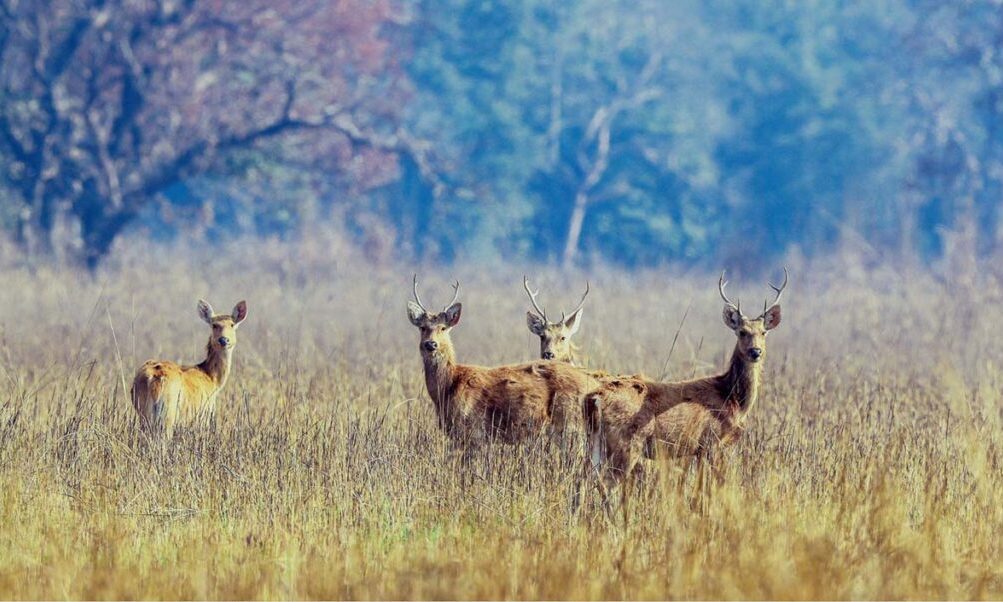
The park offers opportunities for wildlife safaris, birdwatching, and nature walks. Visitors can explore the diverse ecosystems, including grasslands, rivers, and tropical forests while enjoying the sight of rare wildlife in their natural habitat. The park's tranquil environment and stunning landscapes provide a unique experience for nature enthusiasts and conservationists alike.
Beyond its remarkable biodiversity, the region surrounding the national park is also rich in culture and tradition. Visitors can immerse themselves in the local communities, experience their way of life, and witness their unique customs. This blend of natural beauty and cultural heritage makes Shuklaphanta National Park a fascinating destination for nature lovers and those interested in the cultural diversity of Nepal.
- Distance from Kathmandu: 720km
- Best time to travel: Oct-March
- Entry fee: Rs 1050 and Rs 2000 for guide
Nepal is truly an amazing country that is bursting to the seams with biodiversity. The abundance of flora, fauna, and natural beauty in the National Parks in Nepal is truly breathtaking. The forests, lakes, and rivers are must-visit places in Nepal. For more details on national parks, conservation areas, and the biodiversity of Nepal.
For more options for tours and trekking in Nepal please, click here.
If you need any further information, please contact us, Email: at [email protected], Phone: +977- 985 100 5129 (WhatsApp)
#Tags
Tripadvisor
5.0910 reviewsGoogle
4.8110 reviewsFacebook
4.1 recommend44 ReviewsTrustpilot
4.1 Great(5 reviews)- Trusted by50K plus traveller




